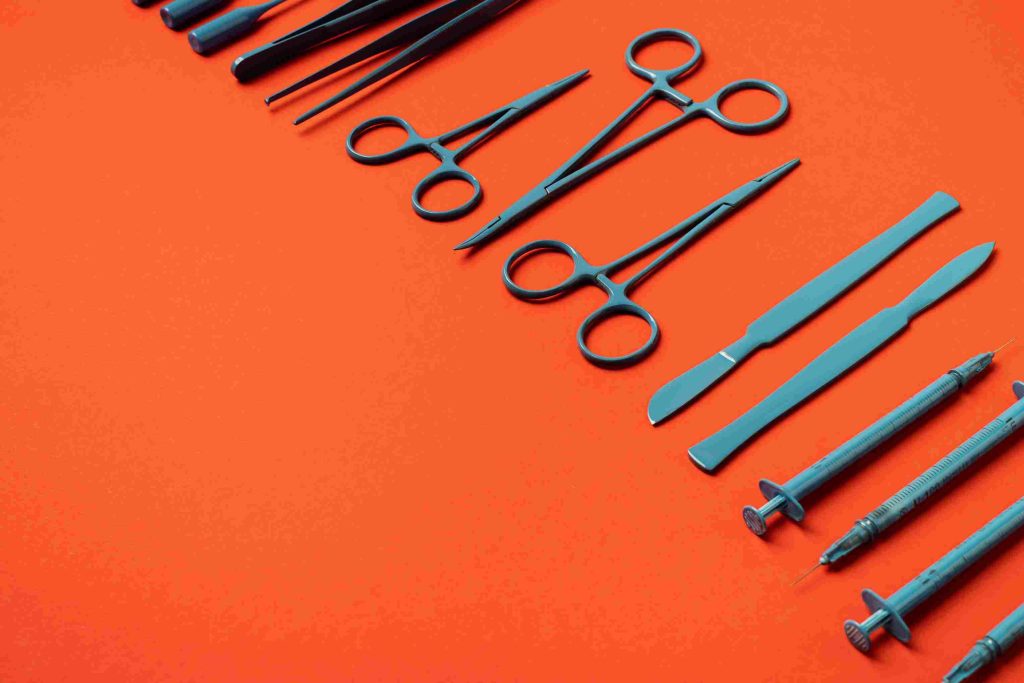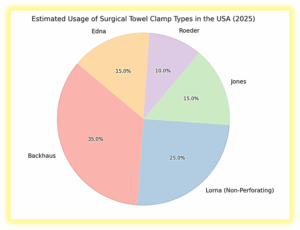General surgery is an integral part of medical practice, encompassing the treatment of a wide variety of conditions. It is important to the quality of the performance of these procedures, which is mostly based on the right tools for the job. This article includes a detailed overview of the types of surgical instruments that are usually included in general surgery, their functions, and the considerations to be made when it comes to such things as selecting and maintaining the instruments.
What Falls Under General Surgical Instruments?
The general surgical instruments are a quite general category of tools that are used in different surgical fields. These instruments can be adapted and easily used for a variety of surgeries from small incisions to complex tissue manipulation. Instead of particular instruments made for definite surgery, general surgical instruments are the backbone of many surgical kits.
There are general surgery instruments and types of tools in routine experiments in hospitals and clinics globally. The function of surgical instruments is built in a way that is easily understandable by the users enabling them to work with precision and efficiency. Knowing about the tools is not only important for medical professionals but also for buyers, students of medicine, and dealers in the industry of healthcare.

Types of Instruments Used in General Surgery
The most common surgical instruments can be classified into the following basic surgical instruments list:
- Cutting and Dissecting Instruments
This group consists of scalpels and different scissors such as Metzenbaum and Mayo scissors. These tools are employed in the cutting of tissues when the need arises with precision.
- Grasping and Holding Instruments: Clamp, needle holder, and towel clip are the instruments included in this category. They serve to seize the tissues, keep suturing needles in place, and also hold up the drapes while the procedure is on.
- Clamping and Occluding Instruments: For instance, Hemostats, Kelly clamps, Mosquito clamps, and Kocher clamps are some of the instruments used to control bleeding and occlude blood vessels or tissues.
- Retracting and Exposing Instruments: Self-retaining retractors and handheld retractors are applied to keep the cut open and reveal the bone underneath supplying the surgeon with a good sight for the operation.
- Suction and Irrigation Instruments: Yankauer and Poole suction tubes are used for removing the fluids and debris from the surgical site thus, the surgeon can see the procedure.
- Note: Every single one of these commonly used surgical instruments serves a precise role in the surgical process, therefore positively contributing to the overall success of the action.
Reusable vs Disposable Instruments: Explained
The issue of whether CSS should be reusable or disposable is a crucial aspect of modern surgical practice besides that each type has its own advantages and disadvantages.
Reusable Instruments
| Pros: | Cons: |
| – Reasonably priced in the long run | – Need of careful sterilization between uses |
| – Higher quality and durability | – The higher initial investment |
| – Caring for the natural environment | – Maintenance and replacement with time |
Disposable Instruments
| Pros: | Cons: |
| – A reduced probability of cross-contamination | – Long-term costs are higher for the same reasons mentioned earlier |
| – No need for sterilization | – Environmental issues because of the increased waste |
| – Only suitable for high-cost surgeries | – May not even have the same quality as the ones that are reusable |
The USA market is progressively adopting the practice of using a combination of reusable and disposable products for each specific procedure and facility.
How to Choose the Right Instruments for Your Practice?
Choosing perfect surgical tools for general surgery is quite complicated and needs to take different aspects of candidates into consideration, including the material, design, certification, and sterilization.
- Material: stainless steel that is of high quality is the desired one for it can be easily cleaned and sterilized.
- Ergonomics: The instruments are expected to be user-friendly and beneficial to the surgeon as they will not be tired during lengthy procedures so production will maintain high quality.
- Sterilization Compatibility: Ensure that you get sterilization instruments that will stand on wear and tear from continuous sterilization before you make your order.
- Certification: Go for firms that have been FDA approved and got ISO certification to satisfy quality and safety needs.
U.S. Market Trends (2023–2025) in Surgical Instruments
The general surgery tool kit market in the USA is changing at a rapid pace. The main features of the change are:
- Growth of minimally invasive tools: The sky-rocketing desire for devices that enable the performance of less harsh incisions that cut recovery times.
- Shift to hybrid and AI-assisted tools: Introduction of technology to the improvement of accuracy and healthcare.
- Demand for precision stainless-steel instruments: Regardless of the bonanza of disposables, quality reusable tools remain an essential part of the whole process.
- Focus on ergonomics: Instruments that are designed to minimize the fatigue of the surgeon during long procedures.
Frequently Misunderstood Instruments and Their Actual Uses
Even among medical professionals, there may be doubts with regard to the actual purposes of some of the used general surgery instruments. Below are instruments, the uses of which are not clear to medical staff:
Hemostat vs. Kelly Clamp
From the clamping end we can see that hemostats are quite miniature and meant for tiny bits and Kelly clamps are quite a bit larger and join KGs for clamping greater vessels or tissue.
Scalpel vs. Blade Handle
A scalpel means the instrument is intact, the handle and the blade too. The blade handle is just the reusable part that accommodates the disposable blades.
Forceps: Tissue vs. Dressing
Tissue forceps have a toothed surface for better gripping to hold delicate tissues. Dressing forceps are smooth and are essentially used for handling dressings in such a way that tissues are not damaged.
Final Word – Why Quality Surgical Instruments Matter
The significance of the high quality of the general surgical instruments must be emphasized. The direct effects of them are:
- Surgical outcomes: Fine instruments provide steadier procedures and higher levels of patient recovery.
- Infection control: Properly designed and serviced instruments reduce the possibility of surgical site infections.
- Efficiency: Essential tools can lead to the reduction of operation time and thus an overall better surgical efficiency.
When the stakeholders in hospitals deliberate on providing high-caliber instruments for the surgical team, particularly surgeons, they are not solely concerned about the initial costs, but the long-term benefits of the most commonly used surgical instruments to patient care and operational efficiency.
Wrangler ensures that every surgical instrument has the most effective results to work with patients and to get better results from the surgeries done.
Looking to buy high-quality surgical tools in the USA? Wrangler Surgical offers precision-engineered, FDA-approved instruments designed for better outcomes. Explore Our website for more…
FAQs
1. What are the most commonly used surgical instruments in general surgery?
The most commonly used surgical instruments include scalpels, scissors (like Mayo and Metzenbaum), forceps, hemostats, and retractors. These tools are essential for cutting, clamping, holding, and exposing tissues during procedures.
2. What’s the difference between reusable and disposable surgical instruments?
Reusable instruments are made from high-quality materials like stainless steel and can be sterilized and used multiple times. Disposable instruments are designed for one-time use, reducing the risk of cross-contamination but generating more waste.
3. How do I choose the right surgical instruments for my hospital or clinic?
Look for FDA-approved tools with ergonomic designs, high-quality stainless steel, and sterilization compatibility. It’s also wise to consider vendor reputation and after-sale support.
4. Are general surgical instruments the same across all types of surgery?
While many general instruments are versatile, some tools are procedure-specific. Surgeons often customize their instrument sets based on the type of surgery and patient needs.
5. Why are high-quality surgical instruments important?
High-quality instruments ensure surgical precision, reduce operating time, lower infection risks, and improve patient recovery outcomes. They’re a long-term investment in safety and efficiency.



